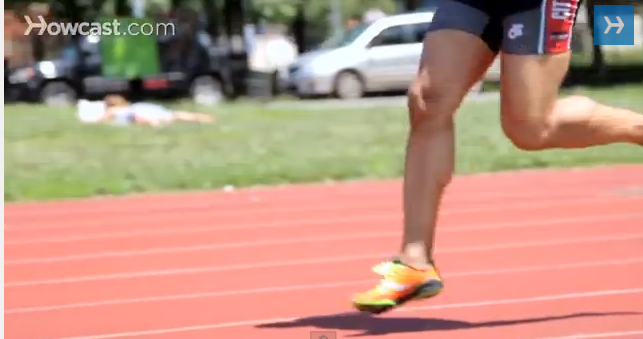Races and start
The aim of races is to reach the finish line with maximum speed within the shortest time. Racing performance can be developed in the juvenile age. Summit outcomes can be achieved by the age of 20-24, but athletes have the chance to maintain the skills and abilities for speeding until the age of 30. The initial phase of sprinting is the starting block phase.
For sprinters starting block is needed to take off more quickly. Sprinters’ knee touches their elbow when in the on “their marks position”. The starting blocks consist of two adjustable footplates attached to a rigid frame. To understand better how to set up the starting blocks for faster acceleration it should be known where to put is and how to set them up. The starting blocks are connected with the starter and races commerce with the firing of the starter’s gun. The starting commands are, on your marks and set. A loudspeaker is also used so that athletes can hear the start referee’s voice. For the 100 m competitors are lined side by side, for the 200 metres which involves curves runners are staggered for the start. Strong tailwind also supports athletes. Runners who stray from their lane or cross the outer line of their lane on the band will be disqualified. Competitors are watched by referees at every 50metres and they will raise a red flag if they obstruct other runners. A start will be a false one if runners after assuming a full and final set position must not commence their starting motion until after receiving the report of the gun.
Factors affecting high achievements
- long legs
- having good reaction and limb motions
- flexible muscles and joints
- speed endurance
- sense of rhythm
- psychological preparedness
- proper fighting spirit
- overcoming stress when starting

Sprinters’ striking the ground
Techniques of start
On your Marks
- The foot is placed up to the starting line but not on it.
- The feet are about shoulder width apart to obtain a good balanced position
- Bend the knees and lean forwards
- Arms synchronised with the legs - in this case left foot forward and right arm forward
- Back, neck and head in line
- Remain motionless
Crouch
- Place the left foot behind the line
- Place the right foot behind the left
- Remove the left foot and place the left knee adjacent to the right ankle
- Hands should be slightly wider than shoulder width
- Arms should be straight but not locked at the elbow
- The fingers should form a bridge, with the thumbs pointing towards one another
- When viewed from the side the shoulder should be above the start line
- The head and neck should be in line with the spine
Set
- Hips raised to a position slightly higher than the shoulders
- There should be an angle of 90 degrees at the front knee
- When viewed from the side the shoulder should be above the start line
- The head and neck should be in line with the spine
- Remain motionless
Teaching how to start running
http://sek.nyme.hu/_layouts/1038/Sport/DVD/Atletika.html#d5e10083
Prerequisites
Moving system
Students’ intellectual level
Students’ coordination level
Needed competencies and abilities
Velocity
Rapid strength
Coordination
Flexibility
Reaction speed
Stretching and relaxation exercises
Stretching of thigh flexor muscle
Stretching of thigh flexor muscle and glutei
Stretching of thigh muscle tension
Stretching of calf muscle
Loosening of hip joint
Stretching of muscle strain and glutei
Hurdling sitting
Standing start
Workouts
Hopping up to stairs
Hopping on a footstool
Running up hills
Running with a rubber band while stretching
Using ankle weights
Sprinting techniques
http://sek.nyme.hu/_layouts/1038/Sport/DVD/Atletika.html#d5e4548
Short distances
Distances covered during trainings: 30m, 60m, 80m, 100m, 120m, 150m, 200m, 250m, 300m, and 350.
Phases
Starting block phase
Acceleration
Constant speed phase
Reaching the finish line
Declaration phase (decreasing velocity)
Teaching to sprint
http://sek.nyme.hu/_layouts/1038/Sport/DVD/Atletika.html#d5e10371
Short distance running
Prerequisites
Moving system
Students’ intellectual level
Students’ coordination level
Conditions that are needed
Cinder or plastic running track
Appropriate shoes
Competences
Acceleration
Flexibility
Coordination
Reaction
Stretching-relaxation workouts
Side-to-side trunk rotations with arms extended outward
Forward-backward leg swings
Stretching of thigh flexor muscle
Stretching of thigh flexor muscle and glutei
Stretching of thigh muscle tension
Stretching of calf muscle
Loosening of hip joint
Hurdling sitting
Strengthening workouts
Hopping up to stairs
Hopping on a footstool
The Rules of the Hungarian Athletic Association and the Guide of Organising Competitions:
http://www.masz.hu/images/stories/pdf-anyagok/szabalyzatok/versenyszab.pdf